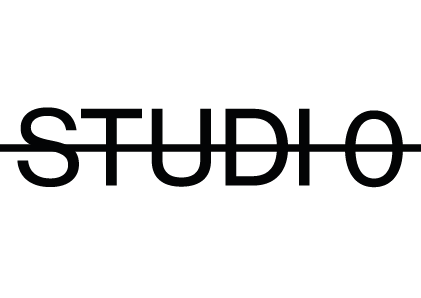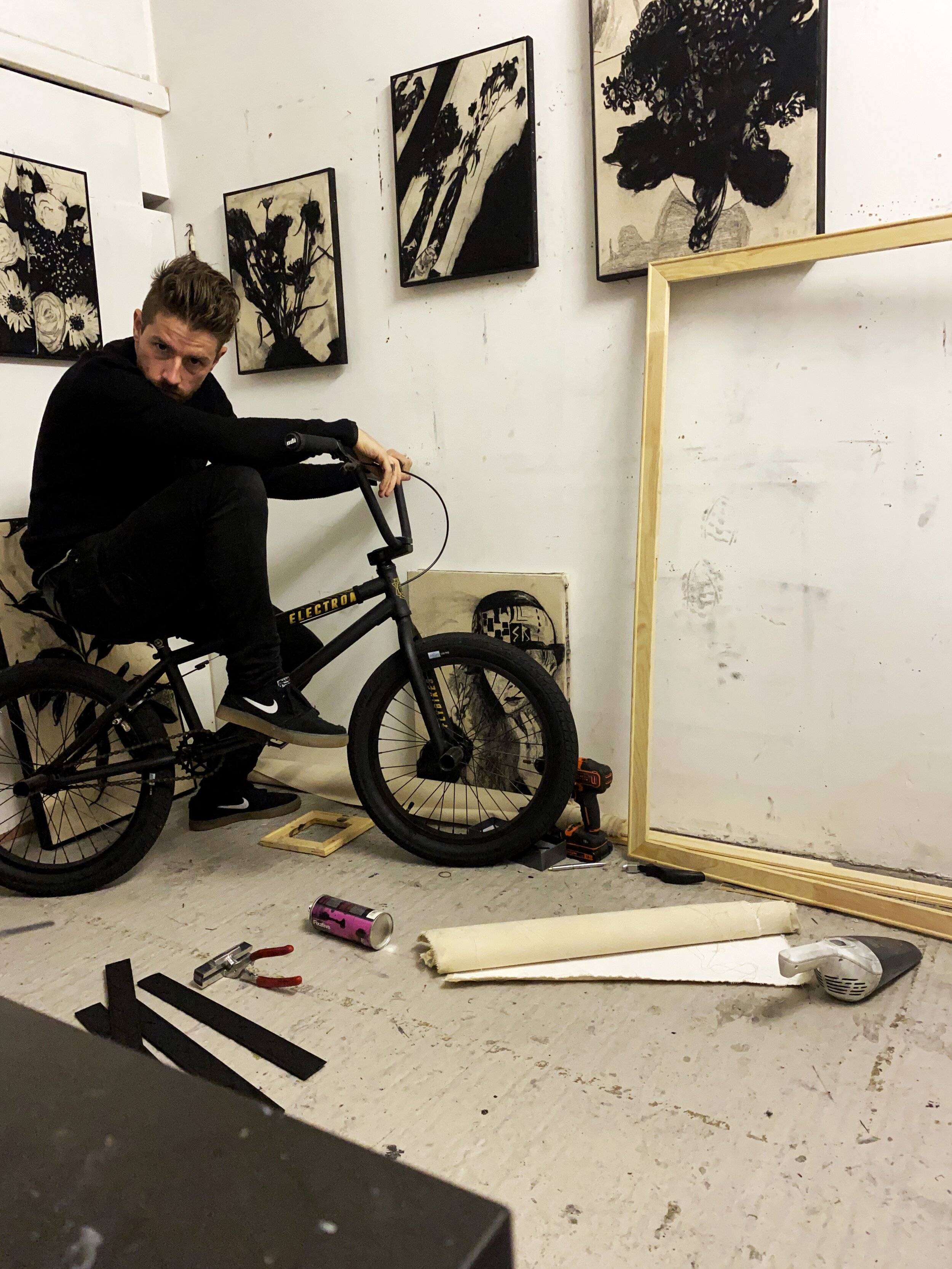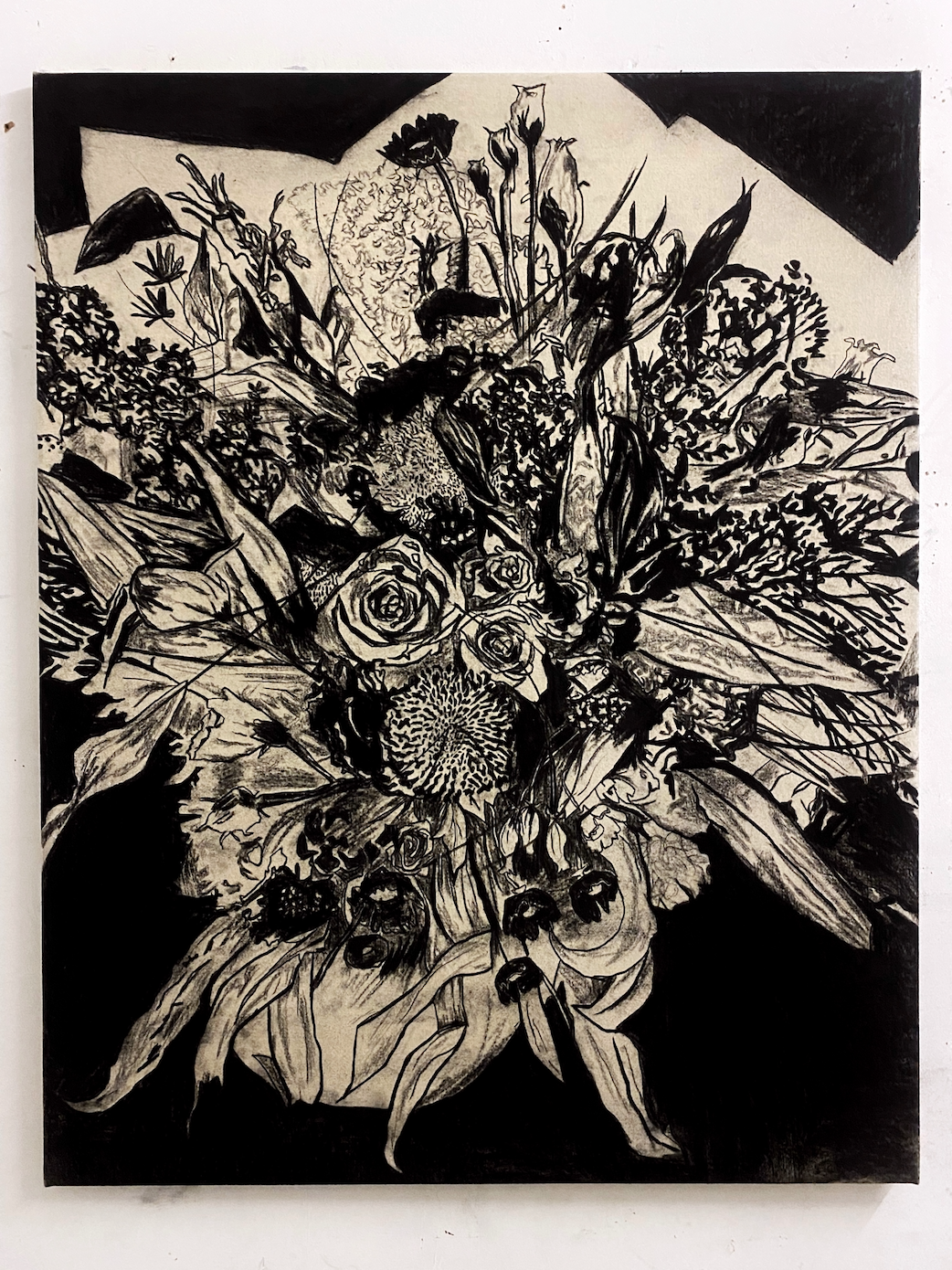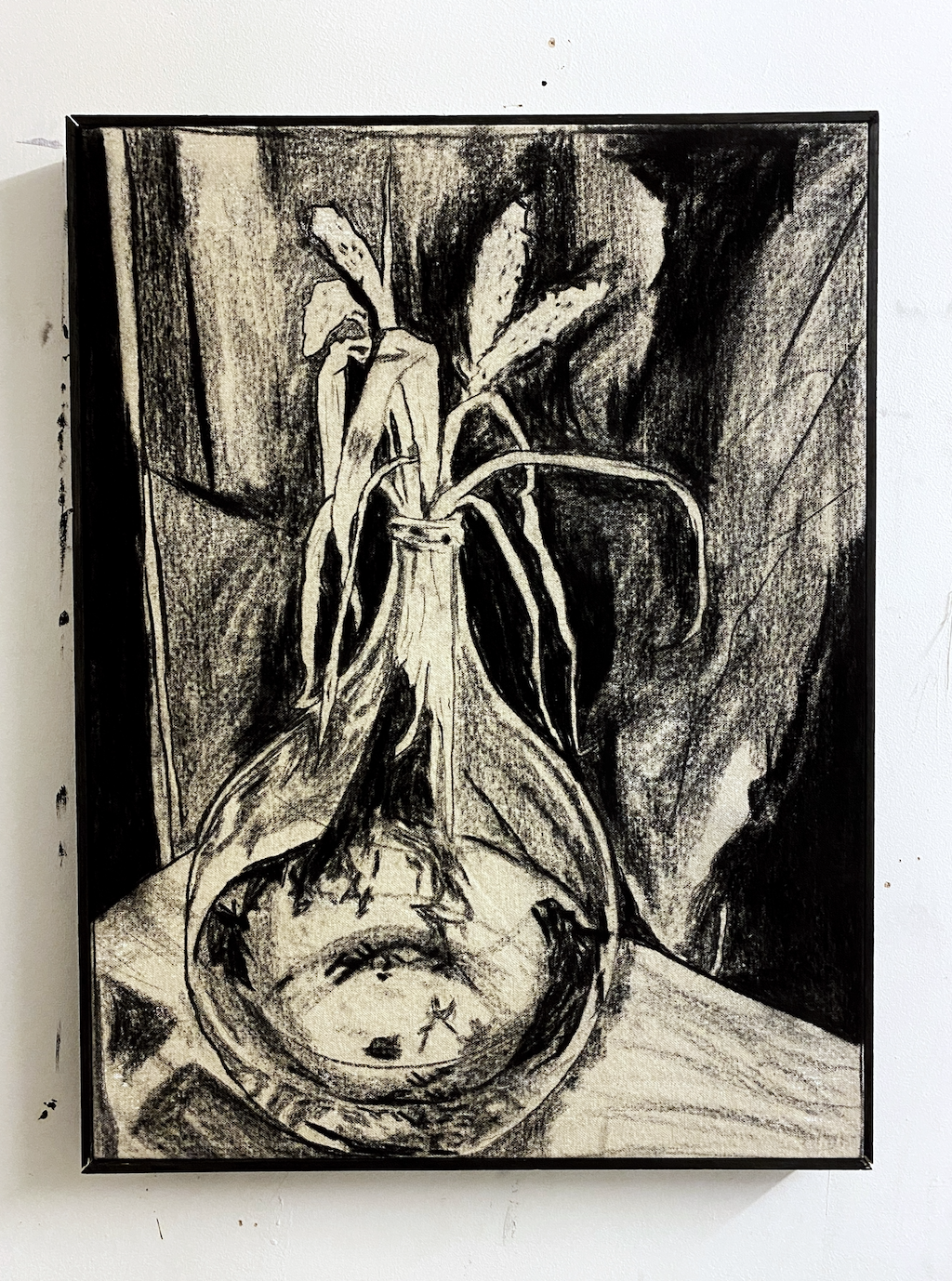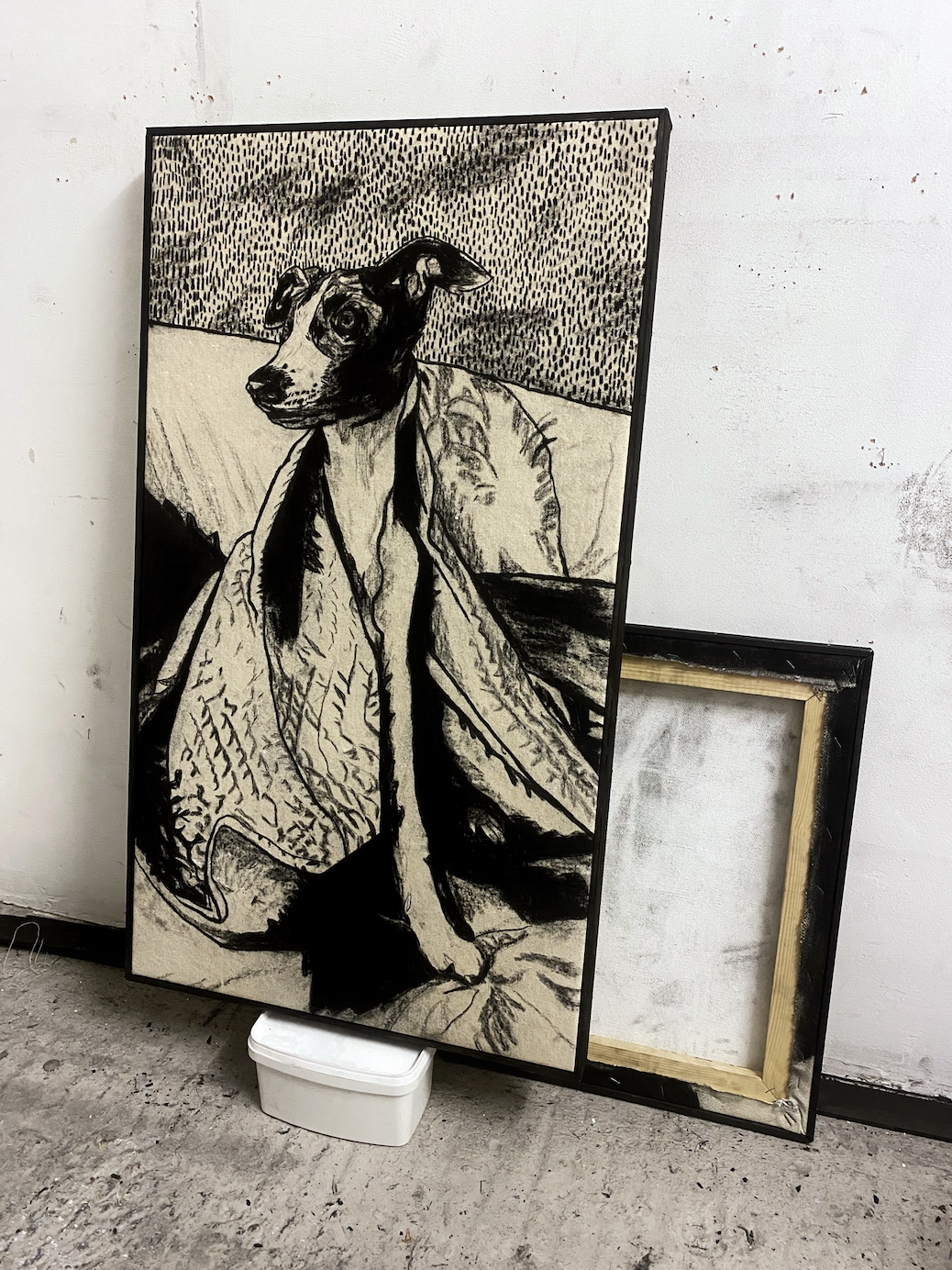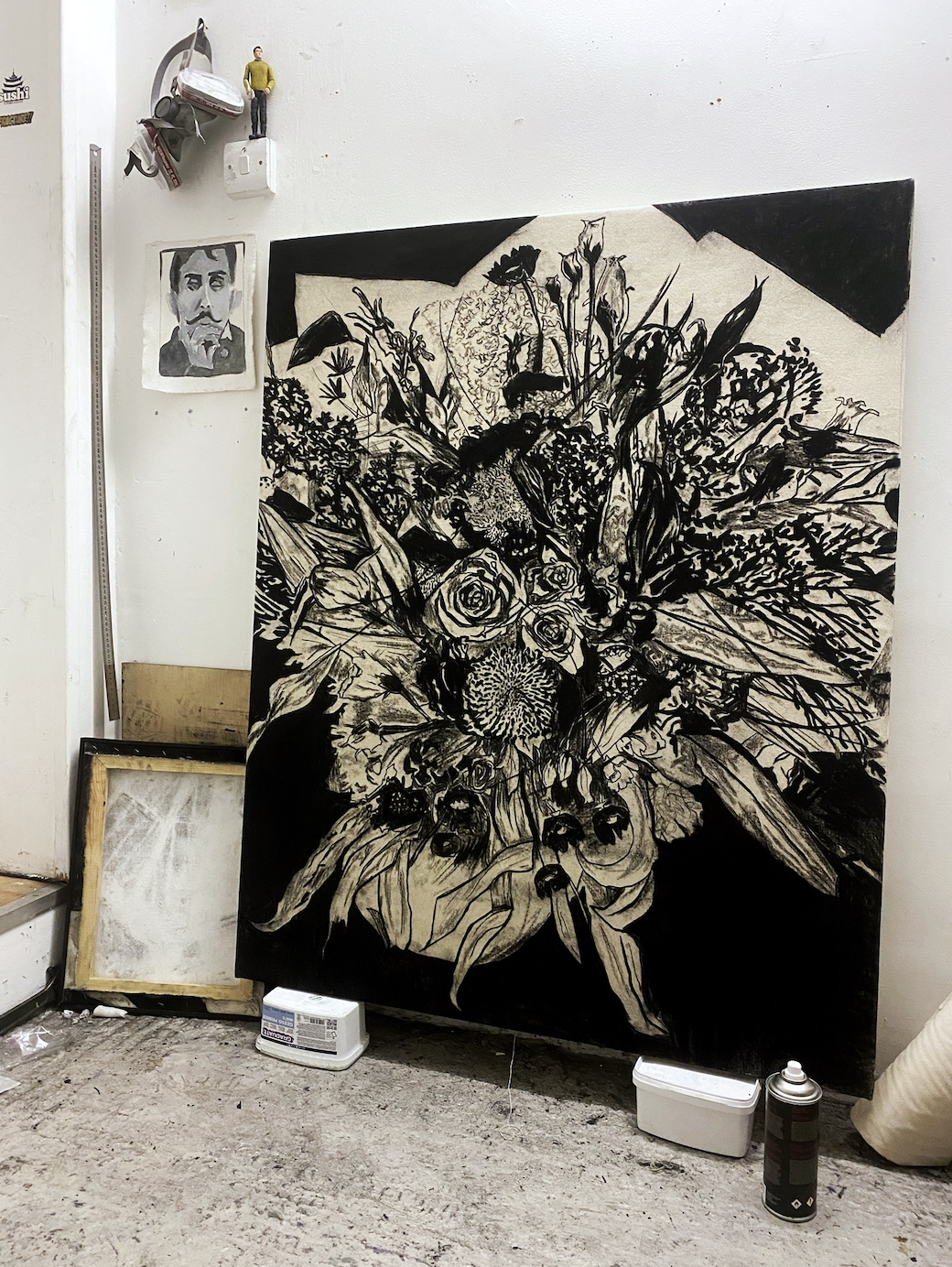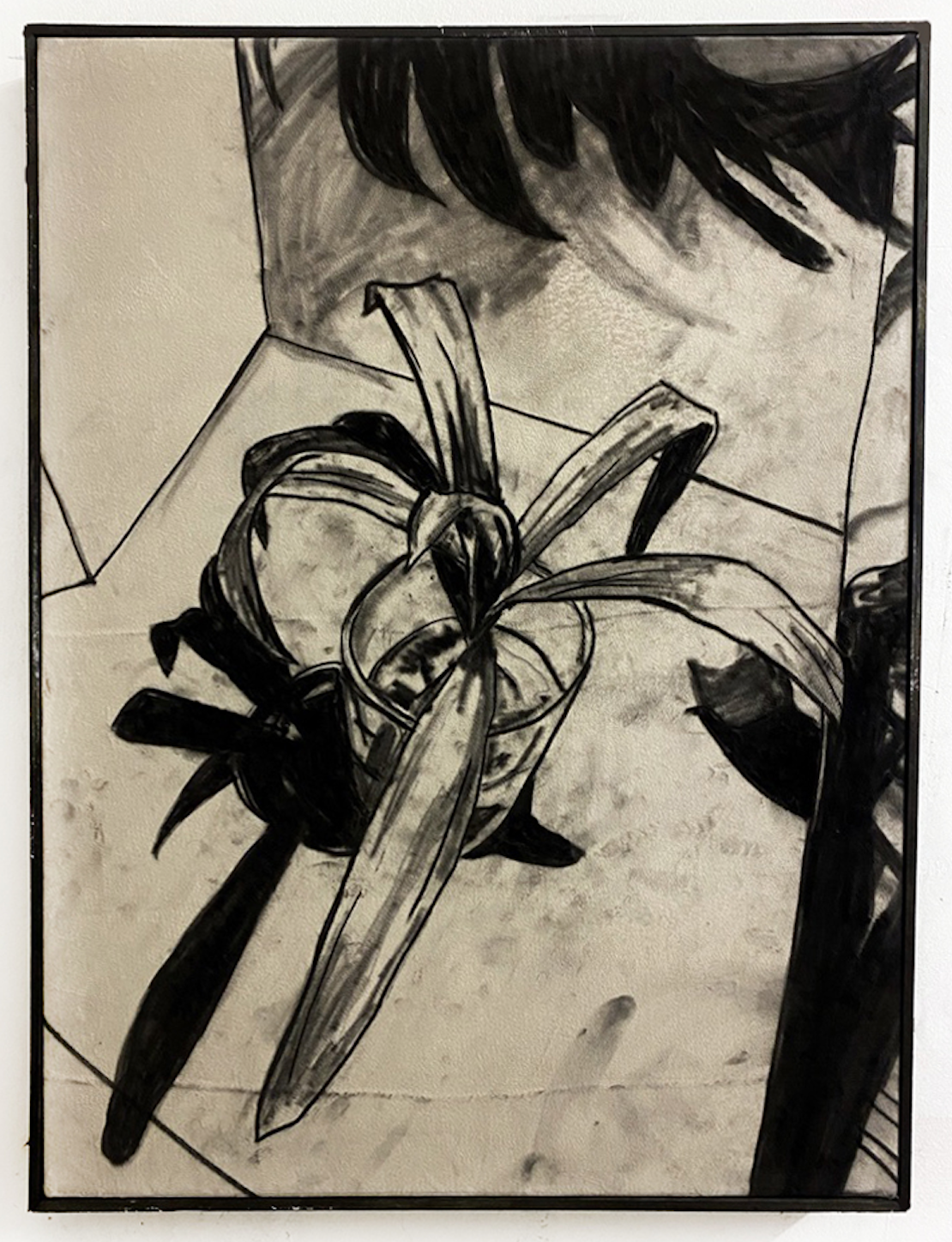‘Monochrome chose me’ - Interview with Benjamin Murphy
Benjamin Murphy is an Artist, Writer and curator based in between the UK and Finland, he’s shown extensively world-wide most notably his solo show ‘Gilded Chaos’ at Beers Contemporary London (UK) 2016, ‘In Praise Of Darkness’ at Piermarq Sydney (AUS) and ‘Antisocial Isolation’ at the Saatchi Gallery London which he co curated.
Alongside all of this Murphy is an associate lecturer at the University of the Arts London and one of the founders of Delphian Gallery who’ve been a pillar in the emerging art scene since their launch in 2017.
Upcoming is ‘PetrolStationFlowers’ Murphy’s solo show at Lychee One, London. Which will be open to the public 8th - 9th May, 2021, and viewable online.
In anticipation of this, we spoke with Murphy to ask him some questions.
Benjamin Murphy in his studio
Your charcoal works feel more fragile and delicate, do you think that is the result of the medium or an active choice on your part?
When drawing with charcoal you’re essentially making works out of powder, out of dust. I chose to work on raw canvas so that any minor mistake or fingerprint would be there forever, as I can’t erase or paint these things out. I think the nature of the medium gives them a delicate ghostly quality, as everything looks like it could be blown away on the next gust of wind. I tried to experiment with this evanescence last summer by leaving a work floating in a lake for three days, but I’d already fixed it and so the charcoal didn’t move. More experiments like that planned though.
You’ve chosen not to use colours in your works, was that an active choice or where does this distinctive feature come from ?
I haven’t used colour in about 12 years, it’s more out of necessity than it being a choice though, I just don’t understand colour and never have. Whenever I look through old sketchbooks and see anything involving colour it’s clear that the monochrome chose me and not the other way around.
Neso, 2021
During your BA you studied Graphic design, do you think that this approach to image making and graphical language influences your work?
I definitely learnt some useful things with software that I wouldn’t have if I did fine art or something, but I was remarkably shit at graphic design. I still am to this day, despite having a degree in it.
Your earlier works were made with electrical tape, quite an unusual material. Now you work mainly with charcoal, how did this transition come to be?
I just started to feel quite trapped by what I was doing. I’d been doing it for so long that eventually I felt I’d lost the experimental nature of art making that is so crucial. Once I realised this I chose the most diametrically opposed medium, one that was messy, imperfect, and one that was totally alien to me. I wanted to learn and progress with something, and to celebrate the naivety that is the result of working in a medium that you don’t understand.
Amy, 2021
You are inspired by classical literature and poetry would you share with us the piece that has been or still is your biggest source of inspiration?
Great fiction is a combination of philosophy and psychology, and so there is a lot more to learn in reading fiction than a lot of people realise. In Search of Lost Time by Marcel Proust is such an excellent study of the conflicted human mind and how people interact with others. As are the works of Tolstoy and Dostoyevsky. These are the three greats in my mind. Sylvia Plath’s journals also deserve a honourable mention. Also, I’m about to start reading the USA trilogy by John Dos Passos, which just from my preliminary reading about it, I can tell is going to influence my work in some way.
Flowers and fauna seem to be an integral part of your imagery, where does this interest in them come from ?
I don’t think I really know the answer to this. Including plants in my work is something I’ve always done, but until recently they were additional elements to support figuration. Perhaps I’ve moved away from figuration for a while both as a way to free myself from my past work, and as a way to allow myself to explore the naivety and the mistakes in working with such a chaotic medium. Plants are more forgiving subjects.
Dione, 2021
You divide your time between the UK and Finland, quite an unusual mix. Do you feel that this has an impact on your art and or practice?
Yeah possibly. My work feels a lot darker and colder than it did before, but perhaps that’s also because I am now reading a lot of Russian literature, whereas before I was reading a lot of elaborate french fiction that was influencing my more elaborate work.
Finally, dream project or exhibition?
If I had unlimited space, time, and resources I’d like to do a solo show that combined my charcoal works alongside video, performance, and written works in an immersive environment that was chaotic and maybe a bit confusing. I think the best work needs to be experienced a few times to be understood, and so a bit of conflict and contradiction is not something to be feared.
Left to right, top to bottom.
Dog, 2021
Pallene, 2020
Neso, 2021
Silver, 2021
A huge thanks to Benjamin for his time and answering our questions.
To find out more about Benjamin Murphy you can view his website here. // Instagram here.
To find out more about ‘PetrolStationFlowers’ you can visit here.
To find out more about Lychee One you can visit here.
